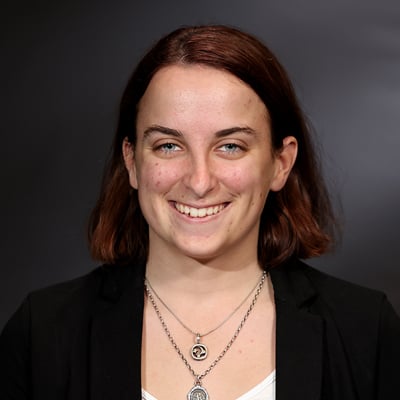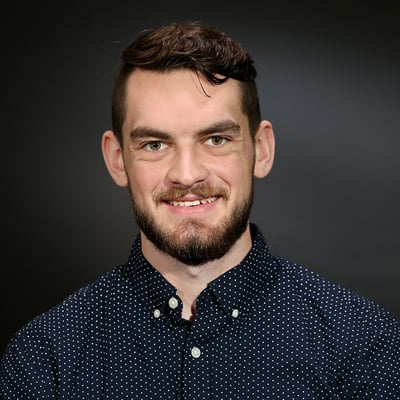HEBER – At this camp nestled among pine trees in northeast Arizona, kids ride horses, pet goats and hold chickens. They play outside with pollen and dust swirling around them – all triggers for their chronic disease.
Parents have been sending their asthmatic children to Camp Not-A-Wheeze for 35 years, safe in the knowledge that their kids will be able to experience sleepaway camp while keeping their asthma under control.
“Camp Not-A-Wheeze is a unique opportunity for children with asthma,” said Alan Crawford, president and camp director. “They can come to camp and not only enjoy a traditional summer camp where they’re going to spend a week participating in activities, but they’re also going to have an opportunity to learn how to manage their lung health.”
Campers’ days are packed with fun activities but there’s also an hour a day devoted to educating them about asthma. In Asthma Discovery, children ages 7 to 14 learn how to identify their triggers and take their medicine properly. Learning materials are provided to take home and share with families.
In Arizona, 10.9% of youth suffer from asthma, according to the American Lung Association’s 2016 Arizona Asthma Burden Report. That rate is slightly higher than the national average of 9.2%.
The report says there were 10,890 emergency department visits by children under age 15 in 2014 attributed primarily to asthma.
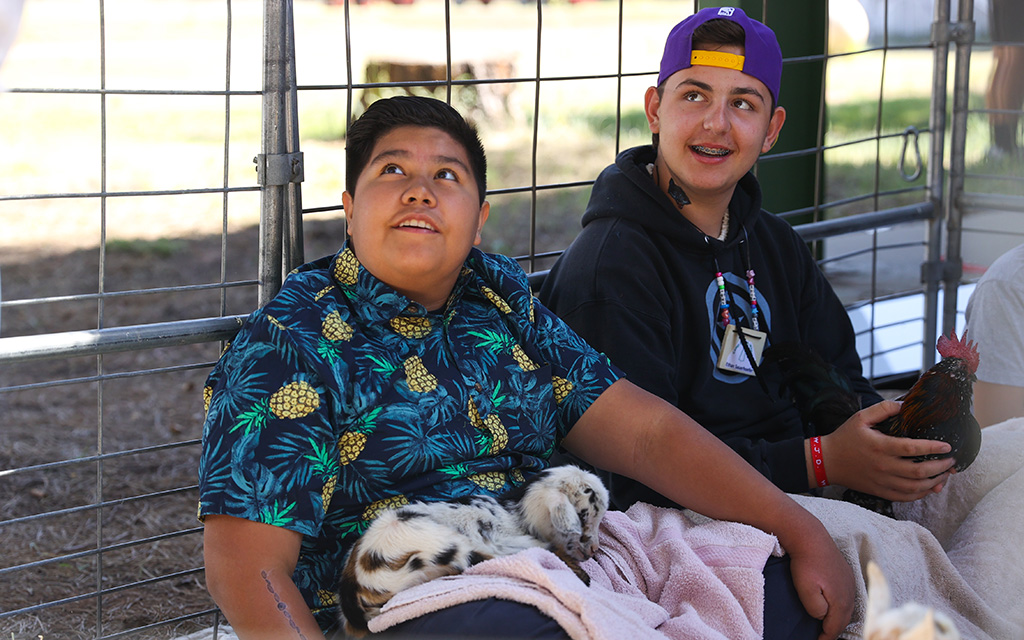
Campers Jose Noriega, left, and Ethan Sauerhoefer handle animals during a demonstration at Camp Not-A-Wheeze in Heber, Arizona. (Photo by Joey Plishka/Cronkite News)
In a 2019 study of a residential asthma camp in Texas, researchers at Baylor University Medical Center found that it helped campers identify their individual triggers, improve medication management and decrease school absenteeism, overall medical expenses and emergency room visits.
Camp Not-A-Wheeze officials said those outcomes are especially important for children from lower-income families.
Tuition for the majority of children attending this year’s camp June 4-10, was paid through scholarships.
“We don’t want any kid that can’t afford to come to camp to miss out on this opportunity to learn about their disease, because those are the ones that are most affected,” said Ashley Feighery, camp vice president who leads the Asthma Discovery sessions.
Dr. Cindy Bauer, camp medical director, said most campers are from areas of need.
“That’s intentional,” she said. “These are children that wouldn’t otherwise have this opportunity, and often don’t have access to specialists.”
A 2022 study led by Harvard University’s T.H. Chan School of Public Health found that children living in neighborhoods with densely populated, lower-income neighborhoods had higher rates of asthma. The analysis, published May 23, 2022, in JAMA Pediatrics, found that Black and Hispanic children were at significantly higher risk of developing asthma than white children, regardless of income levels.
The Arizona Department of Health Services’ 2022 update of the Arizona State Health Assessment reported that Arizonans earning less than $15,000 continue to be the most impacted by asthma.
“Kids living in lower-income and rural areas often have more exposure to triggers” like dirt roads and dusty air, and that can set off an asthma flare, Bauer said.
Crawford said children from lower-income families don’t see their pediatrician or primary care physician as often as children from middle-income families.
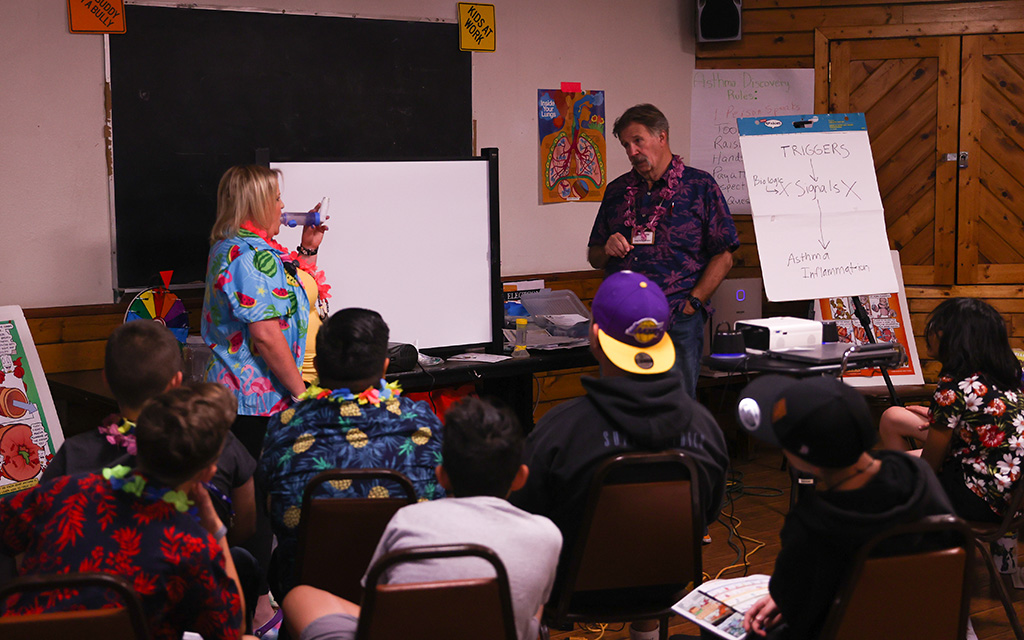
Ashley Feighery, camp vice president, left, helps Steve Fuchs lead a demonstration about how to use different types of inhalers at Camp Not-A-Wheeze in Heber, Arizona. (Photo by Joey Plishka/Cronkite News)
Additionally, he said children from lower-income families may not get training or education from their school nurses, respiratory therapists or pharmacists on how to take their medications.
“We are happy to award opportunities to bring those kids to camp,” Crawford said. “That way, they get to go home and hopefully improve their medication adherence and improve their trigger avoidance.”
Camp Not-a-Wheeze is a nonprofit organization with a camp budget of $75,000, which includes scholarships, transportation, camp rental and all activities. The cost for campers is $650. All camp staff are volunteers and most have medical backgrounds, including nurses, respiratory therapists and doctors.
This year the camp added a collaboration with the Maricopa County Air Quality Department, which provided health kits to teach kids about lung anatomy and how lungs operate. The kits are part of the county’s air quality education program, which teaches students about the importance of breathing clean air.
“When we talk about air quality, things like particulates in the air are important because people with asthma are going to have a harder time,” Crawford said. “We all want to breathe clean and healthy air but we live in a state where our air is not healthy, so things like those high-risk things are important for asthmatics to know.”
Campers learn about the three symptoms of an asthma attack: constriction, mucus and inflammation. They also are taught when to use their bronchodilator, which is called a rescue medication as it provides quick relief that lasts a few hours, and a controller medication, which reduces inflammation and has a longer lasting effect.
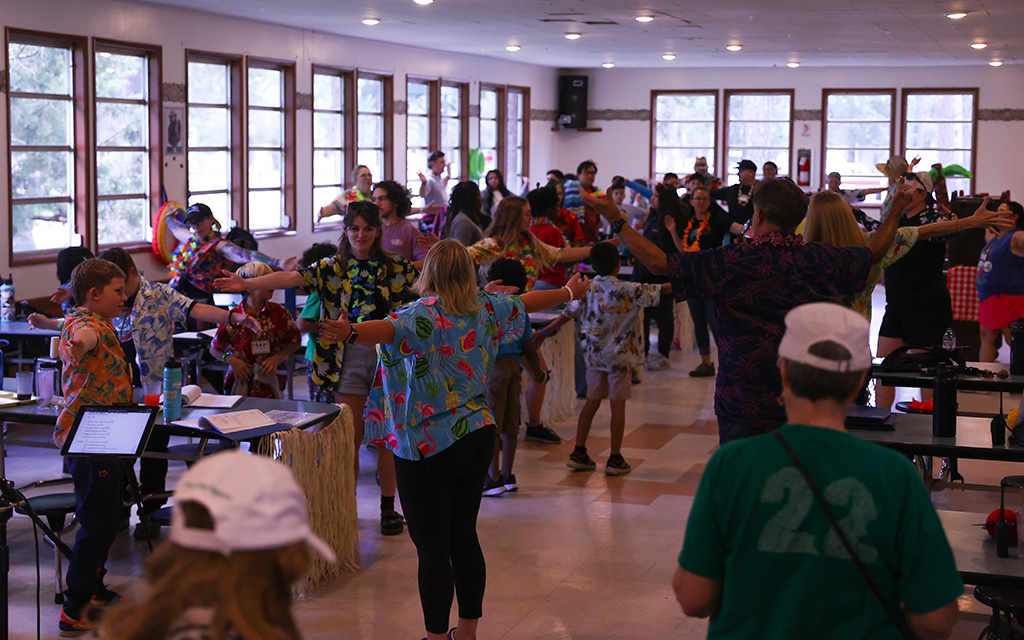
Campers and leaders at Camp Not-A-Wheeze sing and dance in the cafeteria during lunch. Camp Not-A-Wheeze is a summer camp experience for kids with asthma held each year in Heber, Arizona. (Photo by Joey Plishka/Cronkite News)
Crawford said their studies have shown that parents of children who attend Camp Not-A-Wheeze save on average about $2,500 a year on direct costs such as hospitalizations, emergency room visits and doctor appointments.
“Traditionally, kids miss on average three days of school each year,” he said. “That’s an indirect cost of asthma because now parents have to stay home from work. They’re taking PTO or going without pay. If we can give more opportunities to those children it’s a win-win for everyone.”
Additionally, camp leaders hope to help lower asthma’s mortality rate.
“If we can decrease the mortality rate for asthma that’s great, because asthma is a manageable disease yet we still see 3,000 people dying a year from asthma,” Crawford said.
Jose Noriega is a return camper. He said he has learned a lot from his time there, but like kids who attend any camp, his favorite part of the week is making friends.
“I like all the activities that we do, and that we get to make friends here that have asthma like us,” Noriega said.
Brandon Pecak kept coming back as a camper, and now he volunteers.
He said the camp has taught him “the type of relationships you need to have with people, ways to learn new things and ways to get out of your bubble a little bit,” Pecak said. “It showed me that I can do different things … that maybe you thought you couldn’t do because you have asthma, like exercise and go on horses.”
The camp affects not only the campers but the volunteers, too.
“I came starting out as a mom volunteer with a daughter with asthma,” said Scotti Rodriguez, a board member and volunteer. “I really wanted to let her be educated on her asthma and then I willingly joined the board.
“It’s not just sending your kid off to summer camp,” Rodriguez said. “They come back with so much knowledge. Gearing it towards those low-income families is a blessing. We are able to transport them, feed them all week, educate them, show them and send them home with tools. They do not leave here empty-handed.”
Tests at the beginning and end of camp tell administrators that the program is working.
“These kids are leaving here with almost a 98% improvement in test scores,” Crawford said. “By the time they leave camp, they know what a rescue drug is, they know what a controller drug is, they know what triggers to avoid, and that’s what fills my cup.”
